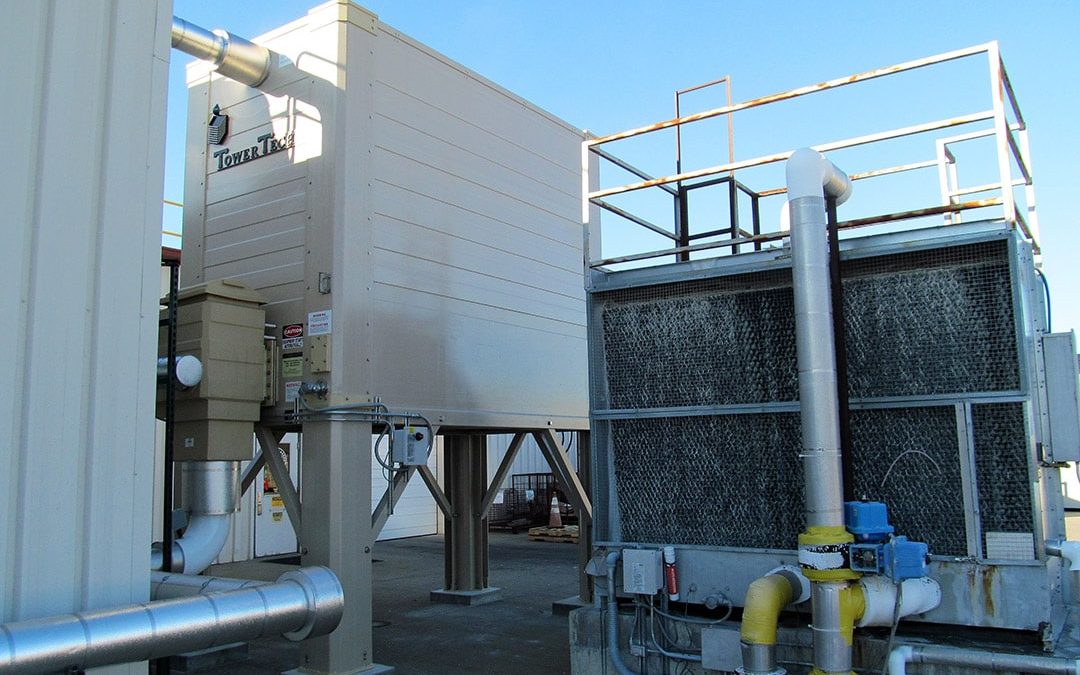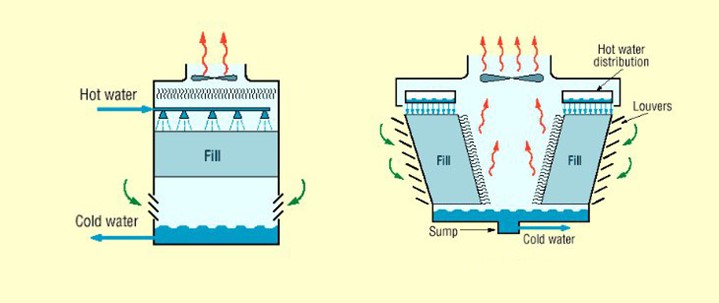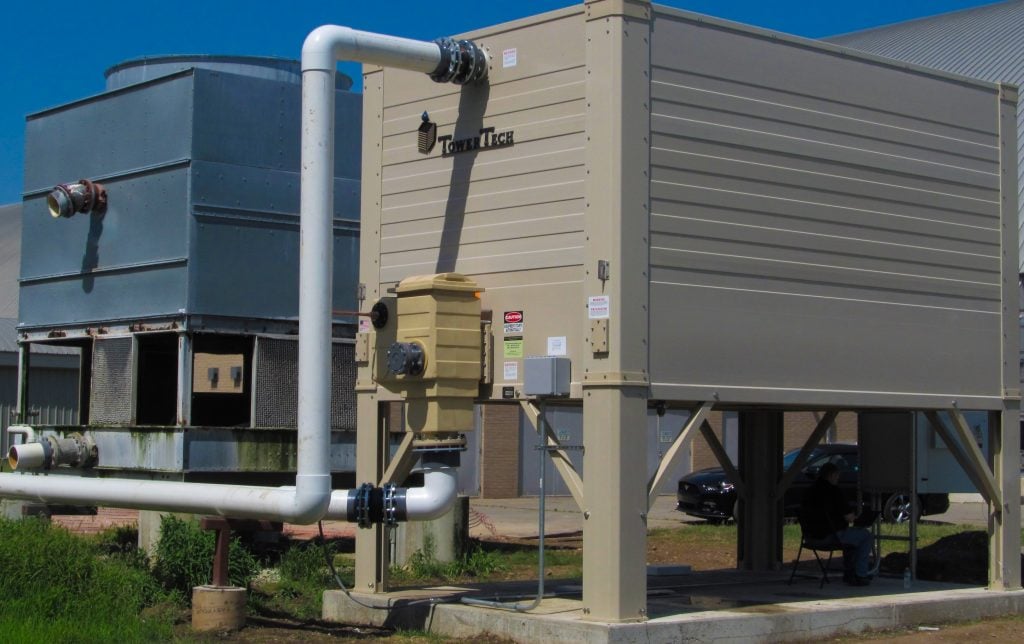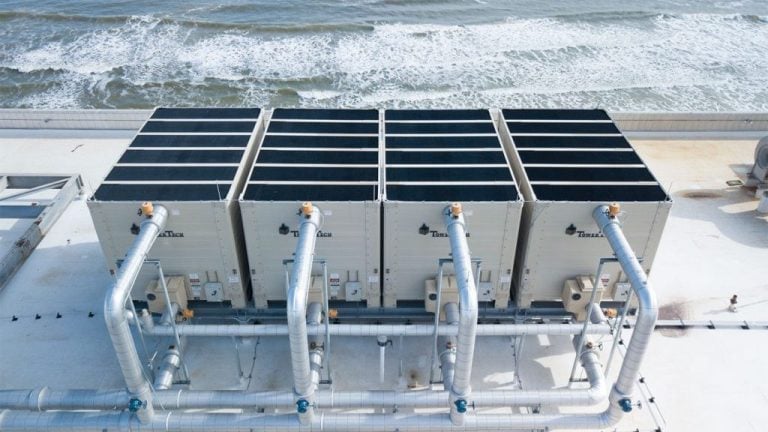Anyone who has packed a moving truck before knows how the amount of space you should have often is less than the space you actually have. This is a common problem faced by those purchasing conventional cooling towers: The size of the tower isn’t the only amount of space the tower ultimately requires to function. On any project, equipment allocated for HVAC is often limited or minimized by a lack of real estate. Roofs may not have enough space for all the necessary equipment, requiring the tower to be placed in a back alley, a pit or in a parking garage. And this doesn’t even account for space (and expense) needed for a screen wall often added to hide the equipment or the louvers and the drift emissions and plum vapors they expel.

Tower Tech modular cooling towers eliminate the “sprawl” associated with conventional towers, letting you do more cooling with the space you have.
Conventional Towers
The most popular and often-used styles among almost all cooling towers are a crossflow or counterflow design with a top-mounted fan. They include louvers – openings through which air passes into the tower to perform the cooling operation.

But these designs have substantial, free-board, open space requirements around them to receive proper airflow and minimize recirculation effects on the tower’s thermal performance. Side-mounted louvers are either at the very top of a crossflow structure or 1/4 to 1/3 of the way up the vertical height in a counterflow design. Since both designs take air in from the sides, multiple units must be placed in one direction or end to end. The result is often a tower ‘farm’ over a football field in length (100 yards) of industrial cooling towers or large HVAC towers. Building in another direction or stacking units closely together is not functional or practical, as the different units’ louvers would then compete for air. This is as inefficient as two scuba divers trying to breathe off the same regulator.
Consider a counterflow tower with a four- to six-foot louver height. Most manufacturers require at least double the louver height (12-18 feet) of freeboard clearance away from those louvers to ensure adequate airflow and heat rejection. A crossflow tower with a louver height of 16 to 20 feet can be equal to that and more depending on the number of tower cells. In both examples, louver size affects both spacings between towers and the spacing between a tower and a wall or structure to avoid air starvation. Air starvation leads to a substantial downgrade in a unit’s ability to perform its cooling task, ratcheting up costs and inefficiencies.
The other factor when placing these units near surrounding structures and walls is air recirculation of the exhaust heated air stream. Popular crossflow towers are prone to recirculate the exiting air during prevailing wind situations as the top of their louvers are very close to the exit air stream, causing substantial performance reductions. Simply put, when considering air intake clearances and recirculation performance challenges, conventional tower designs require a lot more real estate than the unit’s size.
Tower Tech Modular Cooling Tower
It’s plain to see Tower Tech’s smaller, more compact tower design, compared to conventional towers. But the space savings are even greater than you might think. With a bottom-mounted fan, air enters the tower from the bottom, requiring no side-louvers, eliminating the three-times-greater freeboard area conventional towers need. This also means Tower Tech towers can be stacked near a structure, side-by-side, end-to-end or even blocked together without risking air starvation.
Tower Tech’s unique design with the bottom-mounted fan has a low profile, so initial critiques worried that Tower Tech Towers would have the same recirculation problems as a crossflow design. However, performance testing and verification at MIT verified the air blowing at the top of a Tower Tech tower also blows underneath the tower, and the recirculation air is kept away from the inlet fans, minimizing recirculation. Furthermore, this design allows tremendous flexibility of layout options and minimizes the space required for proper thermal operations.
Tower Tech modular cooling towers are the “small but mighty” alternative to space-hogging conventional towers, saving you valuable real estate and fitting into tight spaces that wouldn’t accommodate a traditional tower. Check out our comparison chart to see the many benefits of our towers, and contact us to discuss the space you can save with Tower Tech.


